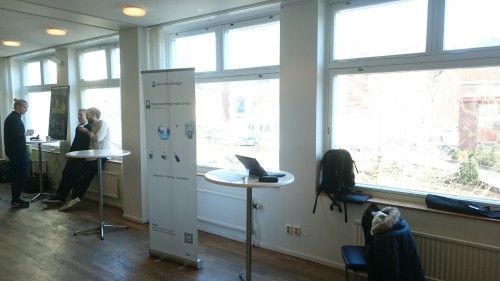Imagine you get the question: “What do you do?”. What would be your first response? It could be “I’m a student”. Now, what if you are asked what your project/organization/company does? One possible answer could be “we organize workshops for children”, etc. For sure, these responses are informative, but they are not that inspiring.
Instead, imagine that we answer something like this: “we enable more children to bring their ideas into the ICT market”. A natural follow up question is “but, how do you do that?”. Here, we can continue describing how we achieve that, for example “we do that by arranging inspirational workshops”.
So, what’s different? Well, in the first answer, we simply state “what we do”, without telling “why we do it”, i.e. the purpose. In the second answer, we also tell how someone changes as a result of what we do. By telling people why we do things, we are conveying a belief – a vision – and so appeal to people’s emotions. And as we know, we make decisions based on emotions, and later rationalize them.
Why bother?
In almost all human endeavors, there is a purpose. For example, a student studies various subjects in order to be able to apply the knowledge in real world problems, and thus make our world a little bit better. To be precise, a future physician could say that the ultimate purpose of their studies is to save human lives (note, we answer the “why”). And, sure enough, it does affect other people in a positive way.
A start up can also be thought of as one body that is constituted of people that share a belief of the future world with their product, i.e. it’s their vision. For example, imagine you’re building an app that will educate people how to act in emergencies. Instead of describing it as I’ve done in the previous sentence, try something like
we want to reduce mortality rate in remote regions (why).
we do that by making the knowledge more available through our mobile app (how, what).
By doing so, you don’t just let people know what you are doing, but you also give them the reason. You have a goal to make the world a better place, and that should go first, since this is your vision – your strategy. Later, you can describe the details of how you are doing this (tactics).
In addition, as pointed out by Simon Sinek, it will also help in the recruiting stage. As research in organisational theory suggests, intrinsic rewards (motivation, relations, etc) are better at motivating people than extrinsic rewards (money, etc) (Herzberg’s Two factor theory). If you want people to unite, you need to set a purpose and a vision, preferably a shared vision (everyone in the team “feels” that they’ve contributed to it).
How?
Before we start building our vision, let’s answer the following questions, as described by Adam Leipzig (see the TED talk).
- Who are you?
- What you do?
- Who do you do it for?
- What do those people want and need?
- How do they change as a result?
Although this is thought to be applied to a life purpose, it is still very effective when conveying the vision of a start up or an organization.
Now, once we’ve answered these questions, we can combine that with the model presented by Simon Sinek, which basically says that “everything starts with the limbic (the emotional brain) and is processed outwards to the neocortex (the thinking brain)” (What great sales people do, p. 70). That is, we should first answer the Why, then How, and finally What.
If we combine these, we would get the following structure:
Why?
We want to enable [Who you do it for] to [how they change as a result].
How?
We achieve that by [what you do].
What?
This feels like an optional section, but you could describe who you are, giving additional details about the way you achieve the vision.
What next?
Once you have the vision, you should believe it, since this will make you more authentic (eg. using your body language). I would strongly recommend the following links/books if you want to find out more. I was myself inspired by them.
- How to know your life purpose in 5 min by Adam Leipzig
- Start With Why by Simon Sinek (TED talks and the books)
- What Great Salespeople Do: The Science of Selling Through Emotional Connection and the Power of Story by Ben Zoldan and Michael T. Bosworth.
- The Definitive Book of Body Language by Barbara Pease and Allan Pease.


